 W
WSteve Arneil is a prominent South African-British master of Kyokushin karate. He learned directly from Masutatsu Oyama and was a senior instructor in Oyama's International Karate Organization (IKO) until 1991, when he resigned from the IKO. Arneil is the founder and President of the International Federation of Karate (IFK), holds the rank of 10th dan, and holds the title Hanshi. He and his wife settled in the United Kingdom in 1965.
 W
WNoriaki Bunasawa also known commonly as Nori Bunasawa, is a Japanese judoka, head coach of team USA at the 1975 World Judo Championships, Japanese judo-jujutsu researcher and historian, writer, sports journalist, actor, fight choreographer, and script consultant. He owned and established martial arts specialty newspaper Judo Journal in the US, which covered judo, jujutsu, sumo, BJJ, MMA and other professional combat sports news. He co-authored a novel based on Mitsuyo Maeda's life The Toughest Man Who Ever Lived which will be adapted into a feature film by a major production company of which he will be a script consultant and action choreographer. He is also the founder of the Mitsuyo Maeda based fighting method: Bunasawa Jukkendo.
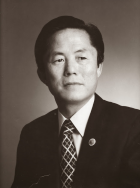 W
WGeneral Choi Hong Hi was a South Korean Army general and martial artist who was an important, albeit controversial figure in the history of the Korean martial art of taekwondo.
 W
WSun Hwan Chung, also known as James Sun Hwan Chung, is one of the highest-ranking Tang Soo Do, Hapkido, and taekwondo grandmasters in the world. He is founder of the Moo Sool Do form of martial arts and is president of the World Academy of Martial Arts, LLC.
 W
WSophia Delza Glassgold, born Sophie Hurwitz, was an American modern dancer, choreographer, author, and practitioner of Wu-style tai chi, which she taught at her school in New York City. She authored the first English language book on tai chi, T'ai Chi Ch'uan: Body and Mind in Harmony. Through her books, articles, lectures, and television appearances, Delza promoted the practice of tai chi for health and fitness, and was one of the first popularizers of Chinese martial arts in the United States.
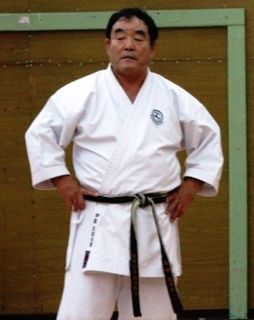 W
WFumio Demura is a well known Japanese master of karate and kobudo. He was Pat Morita's martial arts stunt double in the first, third and fourth Karate Kid films. Demura holds the rank of 9th dan in Shitō-ryū Karate.
 W
WShigeru Egami was a pioneering Japanese master of Shotokan karate who founded the Shōtōkai style. He was a student of Gichin Funakoshi, who is widely recognized as the founder of modern karate.
 W
WKeinosuke Enoeda was a Japanese master of Shotokan karate. He was a former Chief Instructor of the Karate Union of Great Britain. Enoeda was ranked 8th dan in Shotokan karate, and was widely renowned as a formidable karateka. Following his death, Enoeda was posthumously awarded the rank of 9th dan.
 W
WKeiko Fukuda was a Japanese American martial artist. She was the highest-ranked female judoka in history, holding the rank of 9th dan from the Kodokan (2006), and 10th dan from USA Judo and from the United States Judo Federation (USJF), and was the last surviving student of Kanō Jigorō, founder of judo. She was a renowned pioneer of women's judo, together with her senpai Masako Noritomi (1913–1982) being the first woman promoted to 6th dan. In 2006 the Kodokan promoted Fukuda to 9th dan. She is also the first and, so far, only woman to have been promoted to 10th dan in the art of judo. After completing her formal education in Japan, Fukuda visited the United States of America to teach in the 1950s and 1960s, and eventually settled there. She continued to teach her art in the San Francisco Bay Area until her death in 2013.
 W
WAntonio Graceffo is a martial artist and adventure author living in Asia. He is also the host of the web TV show, Martial Arts Odyssey, which traces his ongoing journey through Asia learning martial arts in various countries. Graceffo is credited for revitalizing the lost Khmer art of Bokator by being the first to report on it. Beyond martial arts, Graceffo is also a student of multiple languages, including Mandarin Chinese, Thai, Khmer, Vietnamese, German, Spanish, Italian, and French.
 W
WAli Haghshenas is an Iranian Writer, Historian and Journalist.
 W
WErnest John ("E.J.") Harrison was an English journalist, author and judoka. Harrison was born in Manchester, England, on 22 August 1873. He wrote many books about the practice of judo. He died in London, on 23 April 1961.
 W
WMorio Higaonna is a prominent Okinawan karate practitioner who is the founder and former Chief Instructor of the International Okinawan Goju-ryu Karate-do Federation (IOGKF). He is a holder of the highest rank in Goju-ryu karate, 10th dan. Higaonna has written several books on Goju-ryu karate, including Traditional Karate-do: Okinawa Goju Ryu (1985) and The history of Karate: Okinawan Goju Ryu (2001). Martial arts scholar Donn Draeger (1922–1982) reportedly once described him as "the most dangerous man in Japan in a real fight."
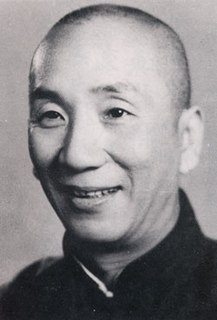 W
WIp Man, also known as Yip Man, was a Chinese martial artist and a grandmaster of the martial art Wing Chun. He had several students who later became martial arts masters in their own right, the most famous among them being Bruce Lee.
 W
WYaichihyōe Kanemitsu was a judoka who was influential in the development of kosen judo. He is credited with the invention of judo techniques like sankaku-jime and hiza-juji-gatame, which were subsequently incorporated into other disciplines, including sambo, Brazilian jiu jitsu and mixed martial arts. He was also known as the teacher of Yasuichi and Naoichi Ono, who took part in the earlier Brazilian vale tudo scene.
 W
WKanō Jigorō was a Japanese educator, athlete, and the founder of Judo. Judo was the first Japanese martial art to gain widespread international recognition, and the first to become an official Olympic sport. Pedagogical innovations attributed to Kanō include the use of black and white belts, and the introduction of dan ranking to show the relative ranking among members of a martial art style. Well-known mottoes attributed to Kanō include "maximum efficiency with minimum effort" and "mutual welfare and benefit".
 W
WTaiji Kase was a Japanese master of Shotokan karate who was one of the earliest masters responsible for introducing this martial art into Europe. He taught his style of karate, Shotokan Ryu Kase Ha, in France from the late 1960s to the mid-1980s. In his later years, he travelled across the world teaching karate, but Paris remained his home. Kase held the rank of 9th dan in karate.
 W
WToshinari Masuda, better known as Toshiya Masuda, is a Japanese novelist, essayist and martial arts historian.
 W
WRichard Meyers, is an American author, ghostwriter, screenwriter, consultant, actor, editor, and teacher, who may be best known for his contributions to the martial arts film industry.
 W
WMiyamoto Musashi , also known as Shinmen Takezō, Miyamoto Bennosuke or, by his Buddhist name, Niten Dōraku, was a Japanese swordsman, philosopher, strategist, writer and rōnin. Musashi, as he was often simply known, became renowned through stories of his unique double-bladed swordsmanship and undefeated record in his 61 duels. He is considered a Kensei, a sword-saint of Japan. He was the founder of the Niten Ichi-ryū, or Nito Ichi-ryū, style of swordsmanship, and in his final years authored The Book of Five Rings and Dokkōdō. Both documents were given to Terao Magonojō, the most important of Musashi's students, seven days before Musashi's death. The Book of Five Rings deals primarily with the character of his Niten Ichi-ryū school in a concrete sense, i.e., his own practical martial art and its generic significance; The Path of Aloneness, on the other hand, deals with the ideas that lie behind it, as well as his life's philosophy in a few short aphoristic sentences. The Miyamoto Musashi Budokan training centre, located in Ōhara-chō (Mimasaka), Okayama prefecture, Japan was erected to honor his name and legend.
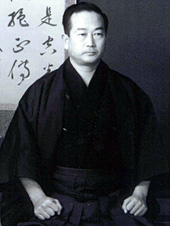 W
WMasatoshi Nakayama was an internationally famous Japanese master of Shotokan karate. He helped establish the Japan Karate Association (JKA) in 1949, and wrote many textbooks on karate, which served to popularize his martial art. For almost 40 years, until his death in 1987, Nakayama worked to spread Shotokan karate around the world. He was the first master in Shotokan history to attain the rank of 9th dan while alive, and was posthumously awarded the rank of 10th dan.
 W
WHidetaka Nishiyama was a prominent Japanese master of Shotokan karate. He was an internationally recognized instructor, author, and administrator, and helped to establish the Japan Karate Association. Nishiyama was one of the last surviving students of Gichin Funakoshi, founder of Shotokan karate. He was based in the United States of America from 1961 until his death in 2008, and was a pioneer of karate in that country. He had been posthumously awarded the rank of 10th dan in karate.
 W
WTsunetane Oda was a judoka who was influential in the development of Kosen judo. His correct name was Tsunetane Oda, but through a misinterpretation of the kanji 常胤 he is more commonly known as Join.
 W
WTsutomu Ohshima is a prominent Japanese master of Shotokan karate who founded the organization Shotokan Karate of America (SKA). He is the Shihan of the SKA, and to this day holds the rank of 5th dan, which was awarded to him by Gichin Funakoshi. Ohshima’s branch of the Shotokan world has become known as “Shotokan Ohshima Karate-do.”
 W
WTeruyuki Okazaki, was a tenth degree black belt in Shotokan Karate, as well as the founder and chief instructor of the International Shotokan Karate Federation (ISKF). Along with Gichin Funakoshi and Masatoshi Nakayama, Okazaki helped found the Japan Karate Association's instructor training program.
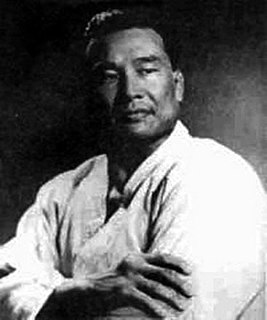 W
WMasutatsu Ōyama , more commonly known as Mas Oyama, was a karate master who founded Kyokushin Karate, considered the first and most influential style of full contact karate. A Zainichi Korean, he spent most of his life living in Japan and acquired Japanese citizenship in 1968.
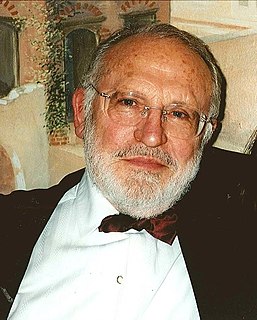 W
WHenry Plée was a French martial artist who is considered as the 'father of European and French karate'. He was one of the rare 10th dan karate masters living outside Japan, and one of the few Westerners who held this rank. At the time of his death, Plée was also the oldest and highest karate ranking Westerner alive, with more than 60 years of fighting arts, including 50 in martial arts. He was a pioneer in introducing karate to France and Europe, and has taught most of today's highest ranking karate masters in Europe.
 W
WStanley Pranin was an American martial artist, founding publisher, and editor-in-chief of Aikido Journal. Pranin, a researcher and archivist of aikido, has written and published several books and many articles about aikido, Daito-ryu Aikijujutsu, and Morihei Ueshiba and was an influential figure in the aikido world.
 W
WChee Soo was an author of books about the philosophy of Taoism and in particular Lee-style t'ai chi ch'uan, Qigong, Ch'ang Ming, Traditional Chinese Medicine and Feng Shou 'Hand of the Wind' Kung Fu.
 W
WSu Yu-chang, was a Taiwanese martial artist, scholar and practitioner of traditional Chinese medicine who devoted his life to teaching kung fu, traditional Chinese philosophy and medicine all over the world.
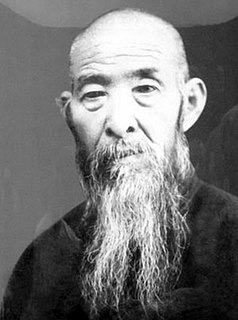 W
WSun Lu-t'ang or Sun Lutang (1860-1933) was a renowned master of Chinese neijia (internal) martial arts and was the progenitor of the syncretic art of Sun-style t'ai chi ch'uan. He was also considered an accomplished Neo-Confucian and Taoist scholar, and was a distinguished contributor to the theory of internal martial arts through his many published works.
 W
WGeoff Thompson is a BAFTA-winning writer, film-maker, spiritual teacher, and martial artist. He has written prolifically in a wide range of genres, including books on spirituality, self-help, self defence, and martial arts, and scripts for film and stage.
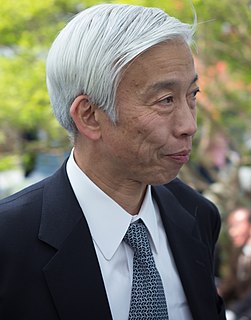 W
WMoriteru Ueshiba is a Japanese master of aikido. He is a grandson of Morihei Ueshiba, founder of aikido, and son of Kisshomaru Ueshiba. Ueshiba is the third and current Doshu of the Aikikai.
 W
WDoc-Fai Wong (黄德輝) is recognized internationally as a master of the Hung Sing branch of Choy Li Fut kung fu and T'ai chi ch'uan. He was born in 1948 in the Guangdong (广东) province of China; the Wangshan village of Wushan - Doumen district of Zhuhai City. In April 1960, he immigrated to San Francisco, California with his mother to be reunited with his father. He arrived as a third-generation citizen of the United States of America since both his grandfather and father were already citizens. He sought out his first kung fu teacher - Lau Bun (劉彬), the founder of the first Hung Sing Kwoon of Choy Li Fut in America, after encountering taunting and bullying due to language and ethnic difficulties after his arrival. When Lau Bun died in 1967, he started teaching and opened his first school when he was 19 years old.
 W
WXie Bingcan was a notable expert and teacher of Qigong, Tuina, and Taijiquan.
 W
WYang Chengfu or Yang Ch'eng-fu (1883–1936) is historically considered the best known teacher of the soft style martial art of Yang-style t'ai chi ch'uan.
 W
WCheng Zongyou 程宗猷 (1561-1636) was a Chinese martial artist. He is noted for his publication Shaolin Gunfa Changzong or Elucidation of Shaolin Staff Techniques, as well as the Gengyu Shengji which described various other weapons systems, including Japanese kenjutsu.